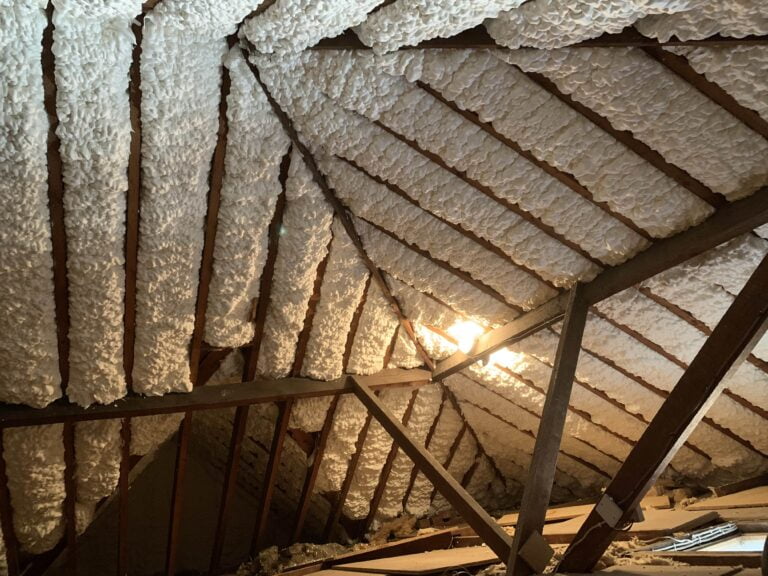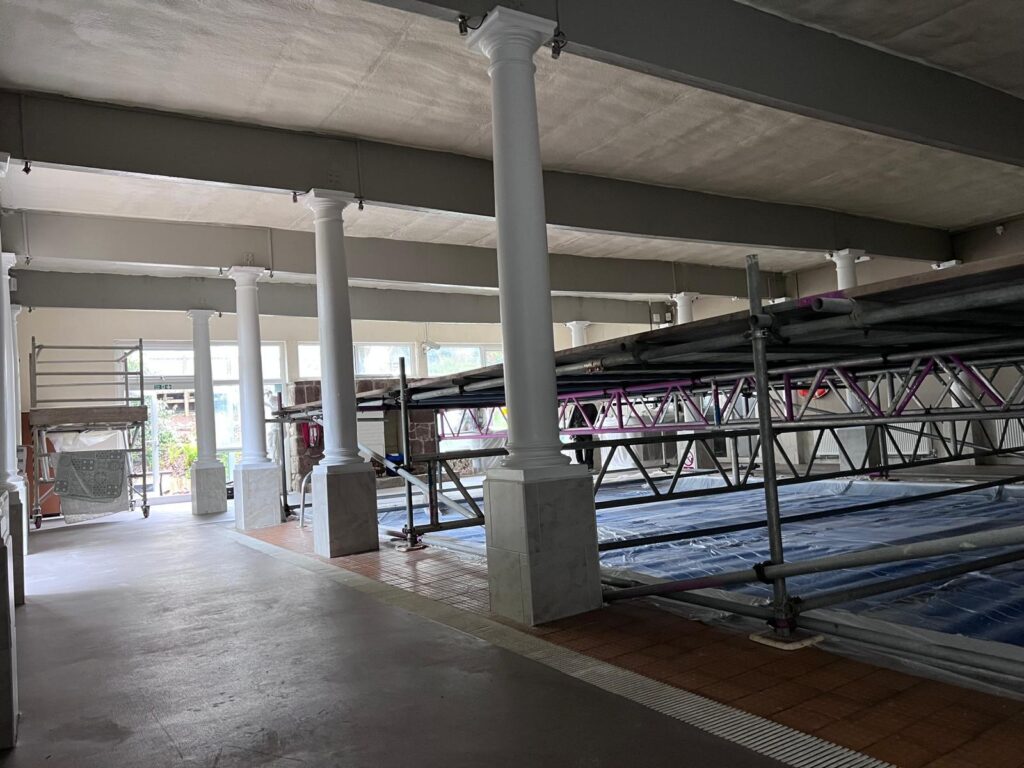Looking for Spray Foam Insulation?
Open Cell vs Closed Cell Spray Foam Insulation?
When deciding how to insulate your home, the type of insulation you employ is crucial. If you are considering installing spray foam, you can choose between two primary varieties: open cell spray foam insulation or closed cell spray foam insulation. Here, we’ll compare and contrast the two options so you can pick the one that’s best for you.
Insulation based on open cell spray foam is more cost-effective, expands to fill the space, and promotes better airflow than closed cell spray foam.
In contrast to open cell foam insulation, closed cell foam insulation costs more, doesn’t expand as much, and completely seals to prevent moisture from escaping. Further, its R-value is roughly double that of open cell foam, therefore has the higher insulating performance.
Many factors distinguish the two forms of foam insulation. Find out more about spray foam insulation, including its benefits, how it’s applied, and how to tell the difference between open cell and closed cell spray foam insulation.

What's on this page?
What is Spray Foam Insulation?
First things first, let’s begin by elaborating a little bit more on what spray foam insulation is and how it works in general.
Spray foam insulation is a foam that is ideal for all sorts of insulation applications, including loft insulation, cavity wall insulation, underfloor insulation, and more.
Much of a building’s heat is lost by air leakage or infiltration due to insufficient insulation. When sprayed in place, spray foam insulation expands to create a sealed building envelope that eliminates this problematic air leakage or infiltration.
By filling all cavities and voids, it can deliver up to 50% greater energy savings compared to other insulation products.
Insulation contractors bring the necessary chemicals to the job site, mix them there, and then use a sprayer to apply the insulation wherever it needs to go.
Foam insulation is an excellent option for the insulation of your home since, due to the way it is constructed, it does not become compressed, saggy, or settled with time. Both open cell and closed cell expanding foam have the ability to maintain their shape for very lengthy periods of time.
Open Cell vs Closed Cell Spray Foam Insulation: Distinctions
The small bubble-like cells are what makes the difference between open cell and closed cell insulation.
Open cell spray foam insulation, as the name implies, has bubbles that are open enough to enable air and water to pass through and soften the overall structure.
Open cell spray foam is recommend in areas of a property with timber frames. This is due to the open cell spray foam expanding and contracting to allow timbers to breathe naturally, whilst still maintaining the high levels of air tightness stopping drafts and preventing heat escaping through gaps in the external envelope.
Closed cell spray foam is more dense because the bubbles cannot let air or water in or out.
Additionally, closed cell spray foam insulation has a lower U-value (higher R-value) than open cell spray foam insulation, therefore has the higher insulating performance.
Both closed cell and open cell foam are capable of providing an airtight seal; however, this can only be achieved with an applied thickness of 2 inches for closed cell foam and 3 inches for open cell foam.
Still confused on which spray foam insulation type is most suitable for your property? Click here to enquire.
Open Cell Spray Foam Insulation
Structure
As was already said, open cell insulation expands more quickly. It makes a shape resembling a bubble that is much more airy and spacious. This sort of insulation is more flexible due to the openness that is present in the construction.
Additionally to being more flexible, open cell insulation is significantly lighter. Being flexible makes it less of a hassle to eliminate.
In addition to this, it is able to insulate areas that are more difficult to access, such as corners, holes, and other forms of nooks.
Moisture
Water may easily pass through open cell insulation, which is another of its advantageous features. It’s not an organic substance, thus it won’t support mould growth.
The insulation’s efficiency is not affected by moisture and resumes normally once it has dried. To put it simply, it provides a channel via which liquid water and water vapour can enter and leave a location.
Sound
Open cell spray foam insulation is effective at dampening noise, which is one of its many advantages. This brings us once more to the topic of its structure.
Remember your science classes in school? Until they are reflected off an object, sound waves propagate through the air. The tiny air pockets in open cell spray foam cause the sound waves to ricochet until they are absorbed.
R-Value
Earlier in the piece, it was established that the R-value of open cell spray foam insulation is lower than that of closed cell spray foam.
Open cell foam has an R-value between 3.5 and 3.8 for every inch thick. The R-value of a substance indicates how effectively it blocks the transfer of heat. The better its insulating properties, the higher it is.
Cost
It’s also a lot cheaper than closed-cell foam. When compared to closed cell foam, open cell expands much more quickly after application. As a result, less is required to cover the desired floor space.
Closed Cell Spray Foam Insulation
Structure
The cells in closed cell insulation are clustered closely together, giving a denser structure. This is why the insulation is referred to by its name.
Closed cell spray foam has a far lower rate of expansion than open cell insulation. The rigidity of the structure and the fact that it doesn’t expand make it very strong.
Even while remaining exposed, it will be resistant to injury. It has the potential to possibly fortify the framework of your property.
Moisture
It is significantly more difficult for water vapour to go back and forth through the closed structure.
The closed cell acts as a barrier against water and moisture entering inside your property and the foam cannot be damaged by water.
This is great for preventing air and water leakage, however not so much for timbers. Hence, closed cell spray foam mainly recommended on metal framed structures rather than homes.
R-Value
It has a substantially greater R-value than open cell spray foam, often around 6.0 per inch, which means that it can absorb around twice as much heat, and therefore has the higher insulating performance.
Because of this, it works extremely well in environments that have both extreme temperatures and high levels of humidity.
Cost
Due to the fact that it does not expand, a significantly greater quantity of material is required to adequately insulate an entire space.
As a result, it is far more expensive to employ. The price to have it installed will also increase.
Sucraseal Open Cell Insulation
At Spray Foam Tech we install Sucraseal open cell spray foam, which is revolutionising the spray foam industry, combining the cutting edge of performance with the health of the environment at the core of its formulation. It is now the UK’s only low density open cell spray foam product that achieves a Class 1 fire rating to BS476: Part 7 when left uncoated.
Providing the ultimate insulation for energy efficiency, comfort, and indoor air quality It is quickly becoming the most popular choice, with additional endorsements from EnergyStar for outstanding energy efficiency.
- The ONLY British Class 1 (BS476: Part 7) fire-rated low density foam
- Uses recycled plastics & offers a low global warming potential of just 1

Nexseal Closed Cell Insulation
We also install Nexseal closed cell spray foam, which is the UK’s leading closed cell spray foam insulation material for use in commercial, agricultural, industrial and new build homes. It can form various control layers for buildings and structures: insulation, air barrier, moisture retarder and weather barrier.
The versatility of spray-applied Nexseal closed cell foams make it the perfect solution for a wide variety of insulation and anti-condensation requirements.
The strong adhesion of Nexseal helps to create a seamless, monolithic layer of insulation that cannot be matched with pre-manufactured forms of insulation.
- Achieves a British Class 1 (BS476: Part 7) and Class 0 (BS476: Part 6) flame spread
- The high density foam helps to add structural integrity & stabilisation





